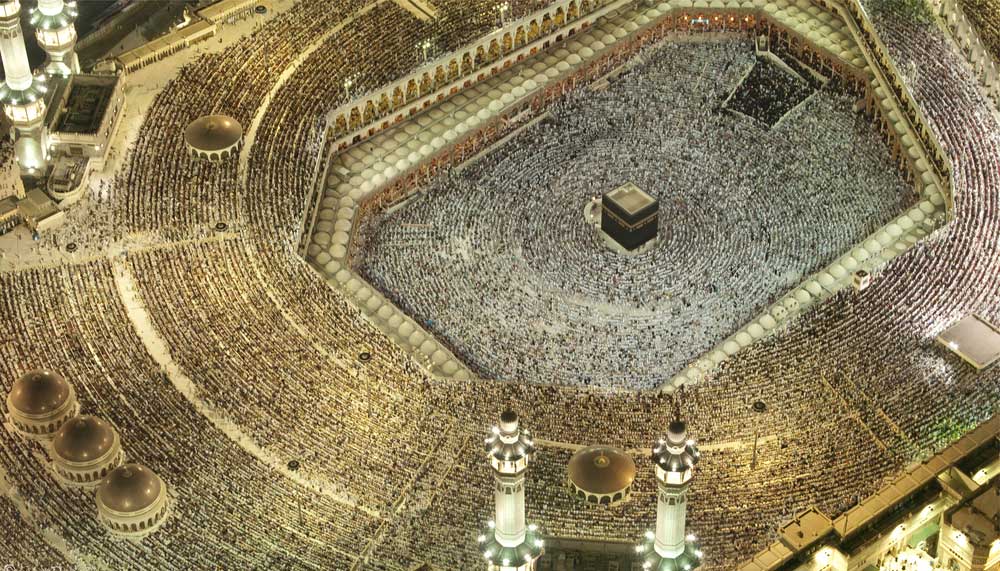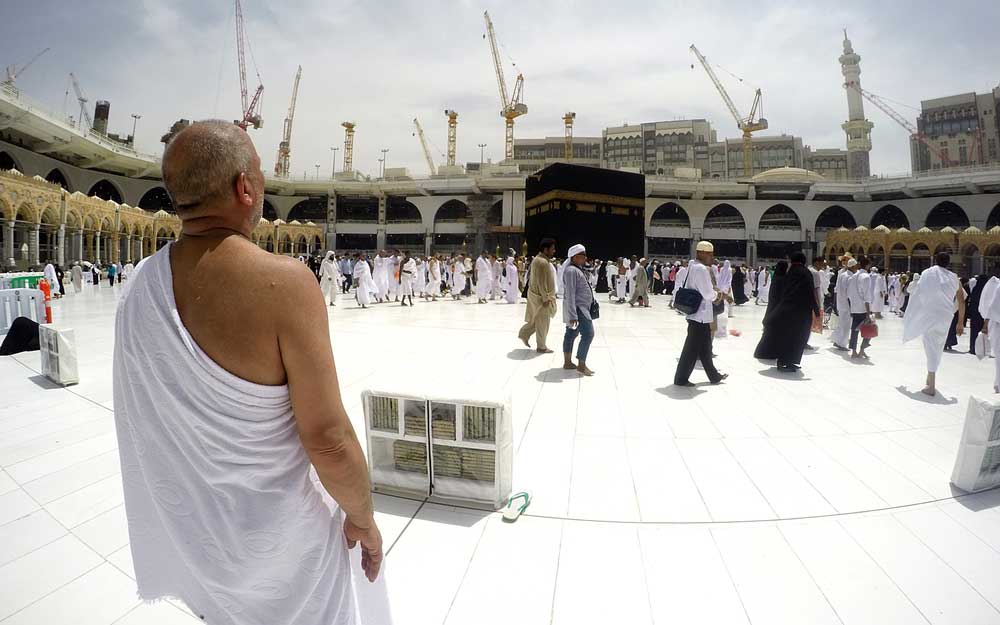Preparing for Hajj
Be sure you are ready to perform the Hajj:

The Hajj is not to be undertaken lightly or as an afterthought. In ancient times, it was not uncommon for pilgrims to die during their journey to Mecca. Though modern conveniences now allow millions of Muslims to quickly and safely travel to and from the holy city, the Hajj should still be approached with the seriousness and dedication of these early pilgrims. Study the rituals of the Hajj, begin to clear your mind of worldly distractions, and, most importantly, be repentant for past sins, which will be forgiven during your pilgrimage.
As with all forms of Muslim worship, the Hajj must be undertaken with sincerity and out of a devotion to God (Allah). The Hajj cannot be performed for the purpose of gaining worldly recognition or material gains in this life.
The Hajj must be performed in accordance with the Prophet Muhammad' s words and deeds (peace and blessings of Allah be upon him) as described in the Sunnah.
Decide which type of Hajj you will undertake:

Muslims have three different options when it comes to performing the Hajj. Each offers a slightly different experience in terms of the rituals performed and the timeline of events on the pilgrimage. The three types of pilgrimage are:
Tamattu' :
This is the most common form of pilgrimage and the one recommended by the Prophet Muhammad himself (peace and blessings of Allah be upon him). People who come to Saudi Arabia from other countries usually perform Hajj al-Tamattu'. The Ihram they wear on or before Miqat is for Umrah only and perform Umrah first, then they slip into their ordinary clothes and on 8 Zil Hijjah they put on Ihram for Hajj at their residence in Mecca and perform the rites of Hajj. It is taken off on the day of sacrifice. Pilgrims performing Tamattu' are called Mutamatti.
Qiran:
In this option, the pilgrim enter into the state of ihram for both Umrah and Hajj at the same time, not taking it off until the day of sacrifice at Mina. In Qiran one has to stick to the long-lasting restrictions of Ihram. Pilgrims performing Qiran are called Qaarin.
Ifraad:
Finally, this form of pilgrimage involves performing only the rites of the Hajj - not of the Umrah as well. This form of pilgrimage is also notable for being the only one that does not require animal sacrifice. Pilgrims performing Ifraad are called Mufrid.
Note :
1. All three kinds of Hajj are essentially the same except intention and duration of Ihram.
2. However, in Hajj al-Tamattu' and Hajj al-Qiran the sacrifice in Mina on 10 Zil-Hijja is Wajib (essential) but in Hajj al-Ifrad it is only Mustahab (desirable).
3. An Afaqi person has the option to wear Ihram for any kind of Hajj but the residents of Mecca and those living in Hil (the area from Miqat to Haram of Mecca, such as Jeddah) are not allowed to perform Hajj al-Tamattu' or Hajj al-Qiran.
4. According to Hanafites, the most excellent kind of Hajj is Qiran, then Tamattu' and then Ifrad.
5. After Umrah for Hajj al-Tamattu' one can perform more Umrahs before Hajj but in case of Hajj al-Qiran one is not allowed to perform more Umrahs before Hajj. And in case of Hajj al-Ifrad also no Umrah is permitted before Hajj.
Plan your trip to Saudi Arabia

The Hajj takes place in and around the holy city of Mecca, which today is located in the country of Saudi Arabia. As when traveling to any foreign country, you will want to have your passports, travel documents, tickets, and so forth sorted out well in advance. Keep in mind that national governments can sometimes be slow to issue new passports when old ones expire.
The Hajj occurs from the 8th to the 12th of Dhul-Hijjah, the 12th month of the Islamic calendar. Because the Islamic calendar is a lunar calendar, the date of the Hajj changes from year to year on the Western Gregorian calendar. Note that, according to the Saudi government, the last day that pilgrims are allowed to arrive at King Abdulaziz International Airport in Jeddah for the Hajj is the 4th of Dhul-Hijjah.
The Saudi government offers special " Hajj visas" to American Muslims who have not made the pilgrimage in the last five years. Obtaining one of these visas requires an up-to-date passport, a completed application form, copies of marriage or birth certificates, and an up-to-date immunization record.
Pilgrims often travel to perform the Hajj in groups as a sign of solidarity. Contact members of your local Muslim community to see if any are performing Hajj this year - if so, you may want to consider coordinating your trips.
Prepare to be immersed in religion

As a traditionalist Islamic monarchy, the nation of Saudi Arabia has rules for personal conduct, especially that of women, that may be unfamiliar to foreigners. All women performing the Hajj should plan to travel in the company of a mahram - any related man, such as her father, brother, husband, son, or an approved individual according to Islamic law. Women over 45 can perform the Hajj without a Mahram if they are part of a large group and have a notarized letter of consent from their husband.
All people - women and men - who are attending the Hajj should prepare to be exceedingly modest for the duration of their stay in Saudi Arabia. Clothing must be modest and unadorned - for much of the pilgrimage, special religious garb is required for men. Cologne, perfume, makeup, and scented soap should be avoided. When a pilgrim enters the sacred Ihram state of ritual purity, smoking, swearing, shaving, cutting one' s nails, and sexual intercourse are forbidden.